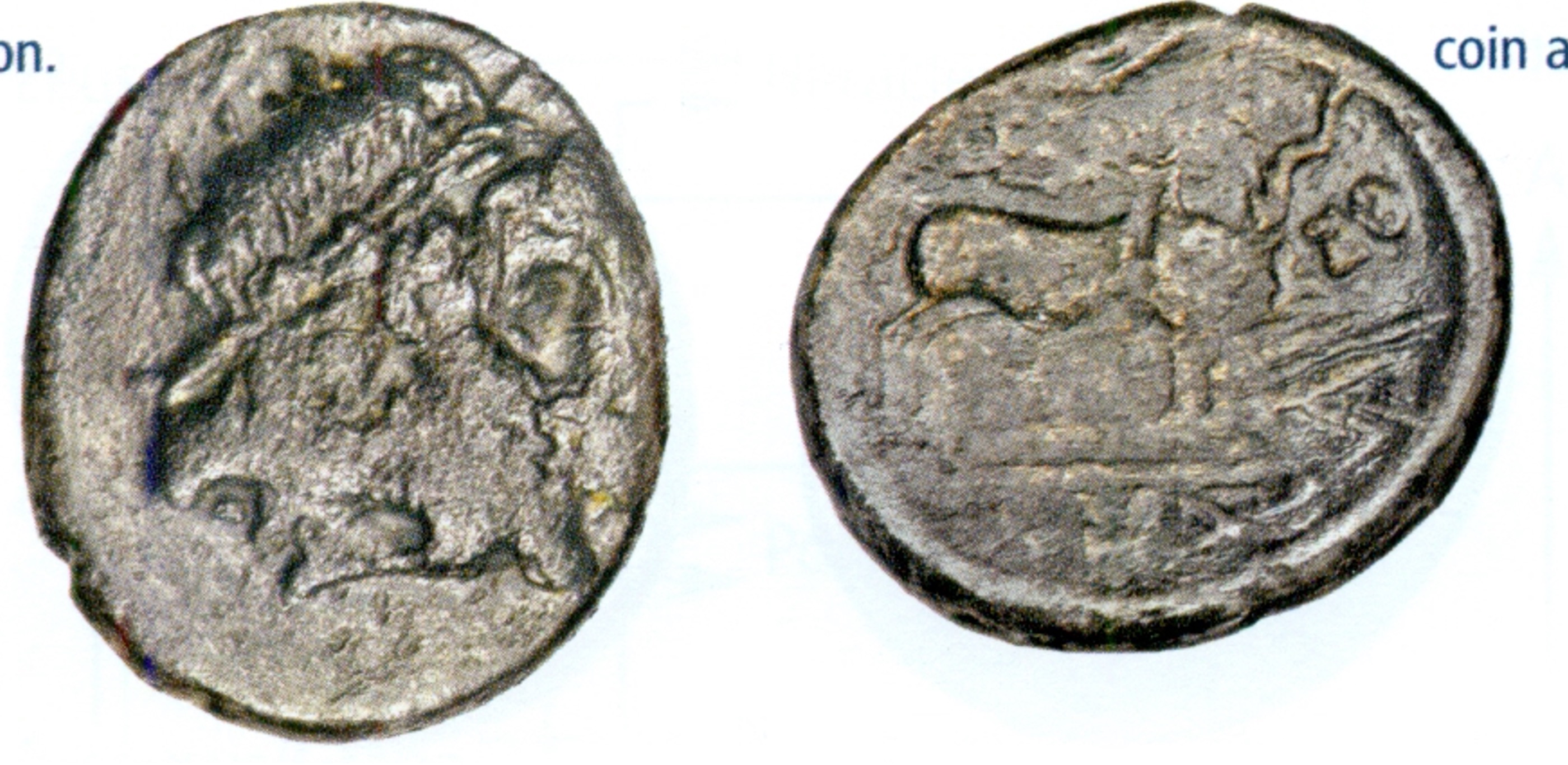SO 734 - Pella over Thessalonica
From SILVER
| Line 1: | Line 1: | ||
{{Overstrike | {{Overstrike | ||
|Image overstriking coin=SO 734 - Pella over Thessalonica.jpg | |Image overstriking coin=SO 734 - Pella over Thessalonica.jpg | ||
| − | |Private collection= | + | |Image overstruck variety visible on the overstriking coin=SO 734 - Pella over Thessalonica variety visible .png |
| + | |Image overstruck variety=SO 734 - Pella over Thessalonica overstruck variety.png | ||
| + | |Private collection=David MacDonald collection | ||
|Obverse description=Head of Zeus right, wearing laurel wreath. | |Obverse description=Head of Zeus right, wearing laurel wreath. | ||
|Reverse legend=ΠΕΛΛΗΣ | |Reverse legend=ΠΕΛΛΗΣ | ||
Revision as of 17:04, 22 May 2023
187 BCE - 146 BCE | ΠΕΛΛΗΣ
Location/history
| Private collection(s)Private collection(s) ᵖ: | David MacDonald collection |
Overstriking coin
Description
| ObverseInscription or printing placed on the obverse.: | Head of Zeus right, wearing laurel wreath. | ReverseInscription or printing placed on the reverse.: | ΠΕΛΛΗΣ Bull standing right. Under his belly, monogram. In right field, monogram? |
Mint and issuing power
| MintIdentifies the place of manufacture or issue of a numismatic object.: | Pella | Ancient regionAncient region. | Macedon | Modern countryModern country: Greece | AuthorityIdentifies the issuing power. The authority can be "pretended" when the name or the portrait of X is on the coin but he/she was not the issuing power. It can also be "uncertain" when there is no mention of X on the coin but he/she was the issuing power according to the historical sources: |
Chronology
| FromIdentifies the initial date in a range assigned in a numismatic context. 187 BCE toIdentifies the final date in a range assigned in a numismatic context.. 146 BCE | Hellenistic 323-30 BC |
Physical description
| MetalThe physical material (usually metal) from which an object is made.: Silver |
WeightWeight of the numismatic object (in grams). in grams: 9.159.15 g <br />9,150 mg <br /> | DenominationTerm indicating the value of a numismatic object. Examples: tetradrachm, chalkous, denarius.: drachma |
AxisDescribes the directional relationship between the obverse and reverse of a numismatic object.: 33 mm <br />0.3 cm <br /> |
| DiameterDescribes diameter of an object (in mm).: 2121 mm <br />2.1 cm <br /> | StandardStandard.: Attic | ||
References
| Coin referenceReference of the Coin: | MacDonald 2000, p. 119, n° 1 (pl. 1, 1), MacDonald 2009, p. 84, n° 63 | Coin series referenceReference to coin series study: | Gaebler 19351Gaebler 1935, p. 95, n° 8, HGC 3.12HGC 3.1, n° 618 |
Overstruck type
Description
| ObverseInscription or printing placed on the obverse.: | Head of Dionysos right (visible: entire face of Dionysos from frontal hair locks to bottom of chin). | ReverseInscription or printing placed on the reverse.: | ΘΕΣ(ΣΑΛΟΝΙΚΗΣ) (Greek) Pegasus flying right. In field, monogram (visible: back half of Pegasus). |
Mint and issuing power
| MintIdentifies the place of manufacture or issue of a numismatic object. ᵖ: | Thessalonica | Ancient regionAncient region. ᵖ | Macedon | Modern countryModern country: Greece | AuthorityIdentifies the authority in whose name (explicitly or implicitly) a numismatic object was issued. ᵖ: |
Chronology
| FromIdentifies the initial date in a range assigned in a numismatic context. 187 BCE toIdentifies the final date in a range assigned in a numismatic context.. 146 BCE | Hellenistic 323-30 BC |
Physical description
References
| Coin type referenceReference to coin series study ᵖ: | Gaebler 19351Gaebler 1935, p. 118, n° 4 |
Additional data
| Frequency of overstrikesFrequency of overstrikes: | Level of confidenceLevel of confidence of the identification: | ||
| RemarksRemarks: | |||
References
- a b Gaebler, Hugo (1935), Die antiken Münzen Nord-Griechenlands, unter Leitung von Theodor Wiegand. Band III, Makedonia und Paionia. 2. Abt., Verlag W. de Gruyter, Berlin
- ^ Hoover, Oliver D. (2016), Handbook of coins of Macedon and its neighbors. 3. Part I: Macedon, Illyria, and Epeiros, sixth to first centuries BC, Lancaster, 437 p.


